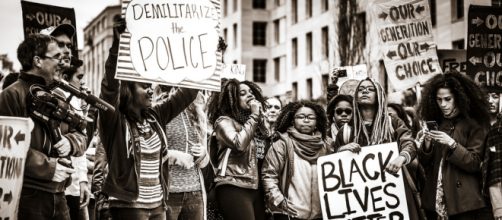The March for Our Lives was incredibly successful. It brought hundreds of thousands of people into a conversation that most politicians are too afraid to have. I was in Bellingham, Washington this past week, and I found myself walking alongside the many people marching.
People of all sorts of different backgrounds and ages attended. Old women held up signs while a man yelled about how we should open-carry hammers instead. Not quite sure this solves the problem or adds to the conversation in a constructive way, but it did make me laugh a little.
One of the more important things I noticed was how many students were attending. These voices; the voices of my generation are what's keeping this movement going. The march, however, did manage to gloss over a very important movement: The Black Lives Movement.
What is the BLM Movement?
The BLM movement began back in 2013 when a young black boy by the name of Trayvon Martin was shot and killed by an officer. The black community had fought for their rights for years and years before this movement, but the hashtag "BlackLivesMatter" became the beginning of something louder. People began to call cops who killed black people what they were: murderers. This was something popular news sources unfortunately often avoid.
People used their social media platforms such as Instagram to post pictures of victims whose lives were abruptly ended by cops with the attached hashtag "BlackLivesMatter."
Many people could not believe that this movement did not seem as inclusive of the BLM movement as they should have been. Karamo Brown, one of the fab five from the most recent season of "Queer Eye," was one of those people. In an interview with Tara Golshan, he explains the voices that have failed to be included: " But when we start talking about the other layers — especially when it comes to people of color — that has to be unpacked. Because we systemically have not valued black lives that we should."
To some, this may come as a surprise, but unfortunately, it shouldn't be.
We also saw voices being subdued in the Women's March. Trans women, gender non-conforming people, and people of color were just a few that were not being heard. To be a woman does not mean to have genitals often associated with women, and it certainly does not exclusively mean white and rich.
So how can we become more inclusive with our movement?
The internet is a very vast and important place. If you aren't familiar with something, research it! Marginalized people do not exist to answer your questions, so please type that question into your search bar.
Follow politically-charged Instagram accounts so you can keep updated with what is going on around you.
Donate to causes such as the BLM movement. You can do this by finding their website and clicking the yellow "Donate" button. You can also buy merch, find BLM events near you, and sign up for updates.


